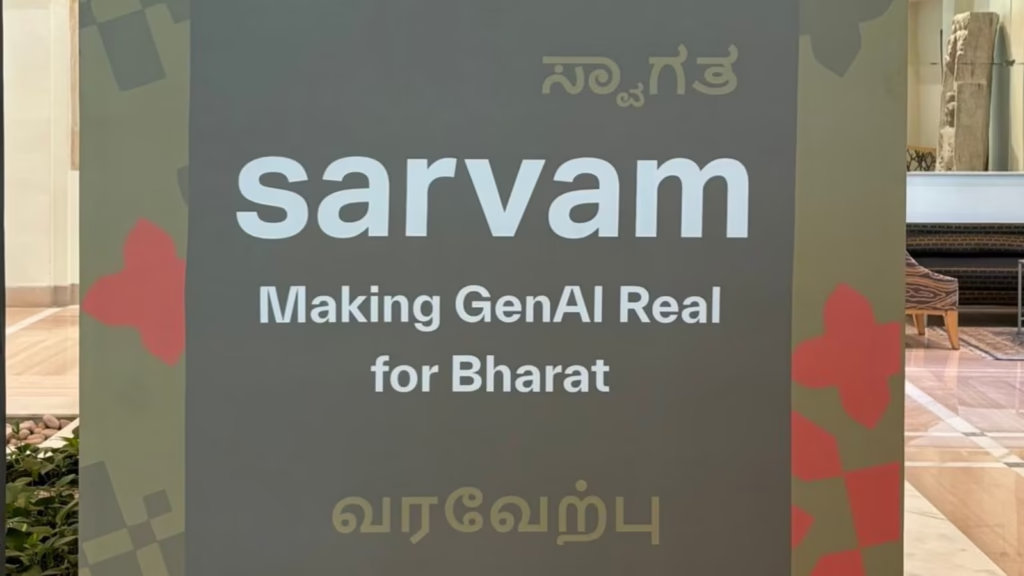In the rapidly evolving landscape of artificial intelligence (AI), India is emerging as a formidable force, not merely as a consumer of AI technologies but as a creator of them. At the forefront of this transformation is Sarvam AI, a Bengaluru-based startup that is redefining the possibilities of AI in India and setting a precedent for the global AI community.
The Genesis of Sarvam AI
Founded in 2023 by Vivek Raghavan and Pratyush Kumar, Sarvam AI was conceived with a singular mission: to develop AI models that resonate with India’s linguistic and cultural diversity. Pratyush Kumar, also a co-founder of AI4Bharat at IIT Madras, brings a wealth of expertise in advancing AI technologies tailored for Indian languages. Sarvam AI’s inception was driven by the recognition that existing AI models often overlook the nuances of Indian languages and contexts .
Sarvam-1: A Milestone in AI Development
One of Sarvam AI’s flagship achievements is the development of Sarvam-1, a 2-billion-parameter language model optimized for 10 major Indian languages, including Hindi, Tamil, Telugu, Kannada, Malayalam, Marathi, Oriya, Punjabi, Bengali, and Gujarati. Unlike many contemporary models that rely heavily on English-centric datasets, Sarvam-1 was trained on a custom corpus, Sarvam-2T, comprising 4 trillion tokens. This dataset was meticulously curated to ensure balanced representation across all supported languages, addressing the challenge of data scarcity in Indian languages .
A standout feature of Sarvam-1 is its tokenizer, which achieves tokenization efficiency rates of 1.4–2.1, significantly outperforming existing multilingual models that often require 4–8 tokens per word for Indic scripts. This efficiency translates to faster processing times and reduced computational costs, making Sarvam-1 particularly suitable for deployment on edge devices .
Beyond Sarvam-1: A Comprehensive AI Ecosystem
Sarvam AI’s vision extends beyond the development of individual models. The company has introduced a suite of products and platforms designed to democratize AI access across India:
- Sarvam 2B: India’s first open-source 2-billion-parameter Indic language model, trained on a massive dataset of 4 trillion tokens. This model offers efficient representation for 10 Indian languages, marking a significant milestone in AI development in India .
- Shuka 1.0: India’s first open-source AudioLM, supporting Indian language voice input and providing text output with high accuracy. Shuka 1.0 addresses the need for precise and reliable voice-to-text conversion in multiple Indian languages .
- Sarvam Agents: Voice-enabled, multilingual, action-oriented, custom business agents deployable via telephone, WhatsApp, or in-app. Currently available in 10 Indian languages, including Hindi, Tamil, Telugu, Malayalam, Punjabi, Odia, Gujarati, Marathi, Kannada, and Bengali. The cost of these voice agents starts at Rs. 1 per minute .
- A1 Workbench: A generative AI workbench designed for modern lawyers, featuring tools for regulatory chat, document drafting, redaction, and data extraction. This platform aims to enhance the capabilities of legal professionals by streamlining complex processes .
Strategic Collaborations and Government Support
Sarvam AI’s impact is amplified through strategic partnerships and government initiatives:
- Partnership with Infosys: In October 2024, Sarvam AI collaborated with Infosys to develop small language models for the Infosys Topaz Banking SLM and Topaz ITOpsSLM systems. This partnership underscores the industry’s confidence in Sarvam AI’s capabilities .
- Government Collaboration: The Ministry of Skill Development & Entrepreneurship (MSDE) announced a partnership with Meta to incorporate Sarvam AI’s AI Assistant into the Skill India Mission. This collaboration established five Centres of Excellence (CoEs) in Virtual Reality (VR) and Mixed Reality (MR) at National Skill Training Institutes (NSTIs) across India .
- Support from AI4Bharat and IIT Madras: Sarvam AI has received support from AI4Bharat and IIT Madras, which have been instrumental in providing language corpora and benchmarks. Their assistance has been crucial in refining Sarvam AI’s models and ensuring their alignment with India’s linguistic diversity .
Addressing India’s Unique Challenges
India’s linguistic landscape is characterized by its vast diversity, with hundreds of languages and dialects spoken across the country. This diversity poses significant challenges for AI development, particularly in creating models that can understand and generate text in multiple Indian languages. Sarvam AI has tackled these challenges head-on by:
- Developing High-Quality Datasets: Recognizing the scarcity of quality training data for Indian languages, Sarvam AI created the Sarvam-2T dataset using synthetic data generation techniques. This approach ensured that the training data was both diverse and representative of the linguistic nuances of Indian languages .
- Optimizing Tokenization: Sarvam AI’s tokenizer achieves high efficiency in processing Indic scripts, reducing the number of tokens required per word. This optimization leads to faster processing times and lower computational costs, making AI more accessible in regions with limited infrastructure .
- Ensuring Cultural Relevance: By training models on data that reflects India’s cultural and contextual nuances, Sarvam AI ensures that its AI systems are not only linguistically accurate but also culturally sensitive. This approach enhances the user experience and fosters trust in AI technologies.
Global Implications and the Path Forward
Sarvam AI’s innovations have far-reaching implications beyond India’s borders:
- Model Exportability: The techniques and models developed by Sarvam AI can be adapted for use in other multilingual regions, such as Southeast Asia and Africa. By focusing on linguistic efficiency and cultural relevance, Sarvam AI sets a precedent for developing AI models that cater to diverse linguistic communities .
- Sovereign AI Development: Sarvam AI’s emphasis on developing AI models within India, using locally sourced data and infrastructure, aligns with the global movement towards sovereign AI. This approach ensures that nations have control over their AI technologies, reducing dependence on foreign entities and safeguarding data privacy .
- Collaborative Innovation: Sarvam AI’s partnerships with academic institutions, government agencies, and industry leaders exemplify the power of collaborative innovation. By pooling resources and expertise, stakeholders can accelerate AI development and address complex challenges more effectively.
Conclusion
Sarvam AI stands as a testament to India’s growing prowess in the field of artificial intelligence. Through its innovative models, strategic collaborations, and commitment to addressing India’s unique challenges, Sarvam AI is not only shaping the future of AI in India but also setting a benchmark for the global AI community. As the world increasingly turns to AI to solve complex problems, Sarvam AI’s approach offers valuable insights into creating inclusive, efficient, and culturally resonant AI technologies.



